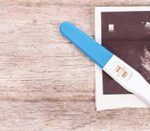NEW YORK (Reuters Health)—Bone resorption increases during pregnancy and continues to be high postpartum, according to new findings using lead testing to measure bone turnover.
Researchers also found unexpected evidence that maternal lead burden is transferred to the fetus.
“These data confirm calcium balance studies that indicate increased bone resorption throughout pregnancy and lactation,” Dr. Brian Gulson of Macquarie University in Sydney, Australia, and colleagues write in Bone, online May 24. “They also indicate potentially major public health implications of the transfer of maternal Pb burden to the fetus and newborn.”
Analyzing bone formation and absorption with standard biomarkers, such as osteocalcin, gives divergent results in pregnant and postpartum women, the team notes.
Concentrations of lead and lead isotopic tracing offer an alternative way to assess bone turnover that is not affected by metabolism or hemodilution, the researchers add. Studies using this technique have shown that lead is mobilized from the skeleton during pregnancy and lactation, as well as extended bed rest and weightlessness.
The Australian environment has a unique isotopic fingerprint due to the presence of ancient lead (about 1.7 million years old), the researchers write, so it is possible to gauge pregnancy-related shifts in lead in recent immigrants. They monitored changes in blood concentrations and isotopic ratio monthly in two cohorts of immigrants and a control group of six Australian women. One cohort (n=10) received calcium supplements, one did not (n=15).
In the second trimester, blood lead decreased, and then increased during the third trimester, suggesting increased mobilization of lead from the skeleton. Lead levels continued to rise after the women gave birth, independent of how long they breastfed their infants, their diet or when their menses resumed.
Unexpectedly, three women in the control group had isotope ratio changes indicative of exposure to European lead. All of their mothers had come from Europe, suggesting that lead may have been transmitted to the daughters during pregnancy and lactation.
“These data are consistent with multi-generational passage of lead and potential effects on DNA methylation with its known effects on biology and biological versus chronological age,” Dr. Gulson and his team write. “Further evidence for these processes could be obtained from the children of the cohorts.”
They conclude: “The significance of these findings in mothers with high skeletal Pb burdens in relation to fetal and neonatal Pb exposure needs further consideration and study.”
